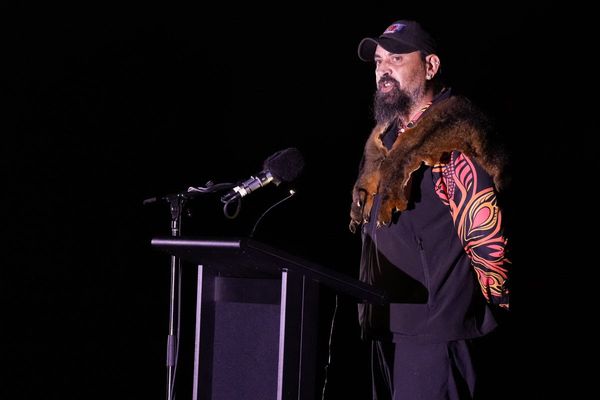
There was a time when the judging of the Turner prize seemed almost credible. The jurors came from different backgrounds, beyond the pale of the gallery circuit. They travelled widely to look at the art they selected, viewing it in person and not just, as sometimes surmised, on a backlit screen. Above all, they had no conspicuous professional relationships with the quartet of nominees chosen as finalists.
But this year is startling. Only the most complacent insider could fail to be struck by the apparent conflicts of interest. Three of the six jurors are in charge of the very galleries where the shortlisted shows took place and a fourth served as a curator. A companionable tour of England (and who knows, perhaps not much further) may be imagined for the judging panel, stopping off at one another’s venues in London, Bristol and Milton Keynes.
This might hardly seem to matter to anyone thinking of visiting the 2022 Turner prize show at Tate Liverpool. But given how random the award – sometimes awarded to bafflingly overpromoted, dull or indifferent art – it is worth knowing a bit of the backstory.
Compare the Turner with the Booker. Imagine that the judges reading all those novels, submitted by publishers, were actually publishers themselves. Would you be in such a hurry to get hold of the prizewinning book? It would seem, as it so often does with the Turner prize, like the industry talking to itself.
Four artists are shortlisted this year. No collectives; no men. Ingrid Pollard and Veronica Ryan are black British artists in their late and much-respected 60s. Heather Phillipson (44) and Sin Wai Kin (31) are highly visible and on the rise respectively. There is nothing glib, slack or doctrinaire in their ideas (beautifully set out in short filmed interviews), and their work is carefully conceived and intensively crafted; yet it can be exiguous and even inert.

Heather Phillipson, whose outsize ice-cream with its hideous black fly topped the Fourth Plinth in Trafalgar Square throughout the lockdowns, is showing a retread of her 2021 Duveen Galleries commission at Tate Britain. A warped multimedia ecosystem of metal insects, glowing boulders, LED screens flickering with wild weather and alarming critter eyes, it is a cross between a rave and a film set, apocalyptic howlround emitting from speakers.
At its heart is a corrugated shack, deserted, supposedly ominous, yet resembling nothing so much as a Mike Nelson installation without the underlying narrative of menace. All the elements lie separate; nothing gathers or coheres.

Veronica Ryan has turned the next gallery into a glowing yellow chamber strung with nets and crochet bags that dangle from the ceiling in brilliant cerise, ochre and violet. Each contains something small and overlooked – fruit, seeds or nutshells, mementoes of the food her Montserrat-born mother gave her during a London childhood.
Tables are laid with fish shells cast in bronze and dishes stitched out of tea-stained fabrics. Plush pillows and cushions are cast in pale plaster. It is a shame you can’t get up closer to these intimate objects. This late-flowering surrealism amounts to a parallel environment – another room in another world, its small, quiet objects relics of her own family history but also inflected with hints of the slave trade. It is very gentle and pensive, but alas occasionally repetitive.
Sin Wai Kin is the star and the producer-director of a sequence of films that pastiche everything from TikTok to Chinese television to boyband promos. Sin plays all the parts, a quick-change artist who appears in prosthetics, wigs and spectacular makeup that turn them into everything from Korean pop star to TV host to curvaceous pin-up, and even an exquisite living Chinese watercolour.
Sin’s promo for the boyband is a witty analysis of that artificial phenomenon – the serious one, the egotist, the weirdo and so on – hypnotic to watch, and spot on with its lyrics and choreography. The song’s hook could stand as a punchline to all of Sin’s speculative fictions in this exhibition. “It’s always you” croons the breathy singer: but what is you, and how many versions of you can there be before you no longer have a self, in a contemporary world where everyone makes themselves up?
Ingrid Pollard is showing many years of work in multiple media. An unfolding photographic narrative includes shots of the Black Boy pub, Black Boy Buildings, Black Boy street signs, puppets, jewelled brooches and even a shockingly pertinent extract from Virginia Woolf’s Orlando featuring a black boy’s lopped head. Eerie white relief prints, into which you have to peer to make out any discernible subject, turn out to hold similar ghostly images, as if white history was trying to erase its racist past; and still the traces remain.

Her latest kinetic sculptures, in the vein of Jean Tinguely, are highly expressive in their form and movement. A being fashioned out of a bicycle and a heavy rope rears upwards, almost delivering a blow, but falls backwards, shuddering and defeated. A couple of chainsaws, like limbs, nearly rise up to make a cutting point. They are of a piece with the haunting lenticular photographs in which a little black girl in a 1940s white frock sinks down in a curtsey, and rises up again, over and over again. Is she doing so out of ceremonial pride or forced deference to some unseen imperial power? Like the sculptures, she is trapped in an endless cycle of repetition, nearly there but not quite, always trying to break free.
The brand new and the mature, the latest and the longest standing are pitted together quite unfairly in this peculiarly imbalanced iteration of the Turner prize show. My sense is that Pollard deserves to win because her galleries are nothing short of a condensed lifetime retrospective of considerable seriousness and strength. But the system always goes awry, one way or another. The Turner prize never makes any sense.
The Turner prize 2022 is at Tate Liverpool until 19 March 2023







